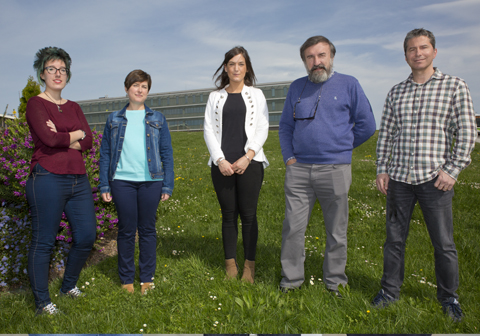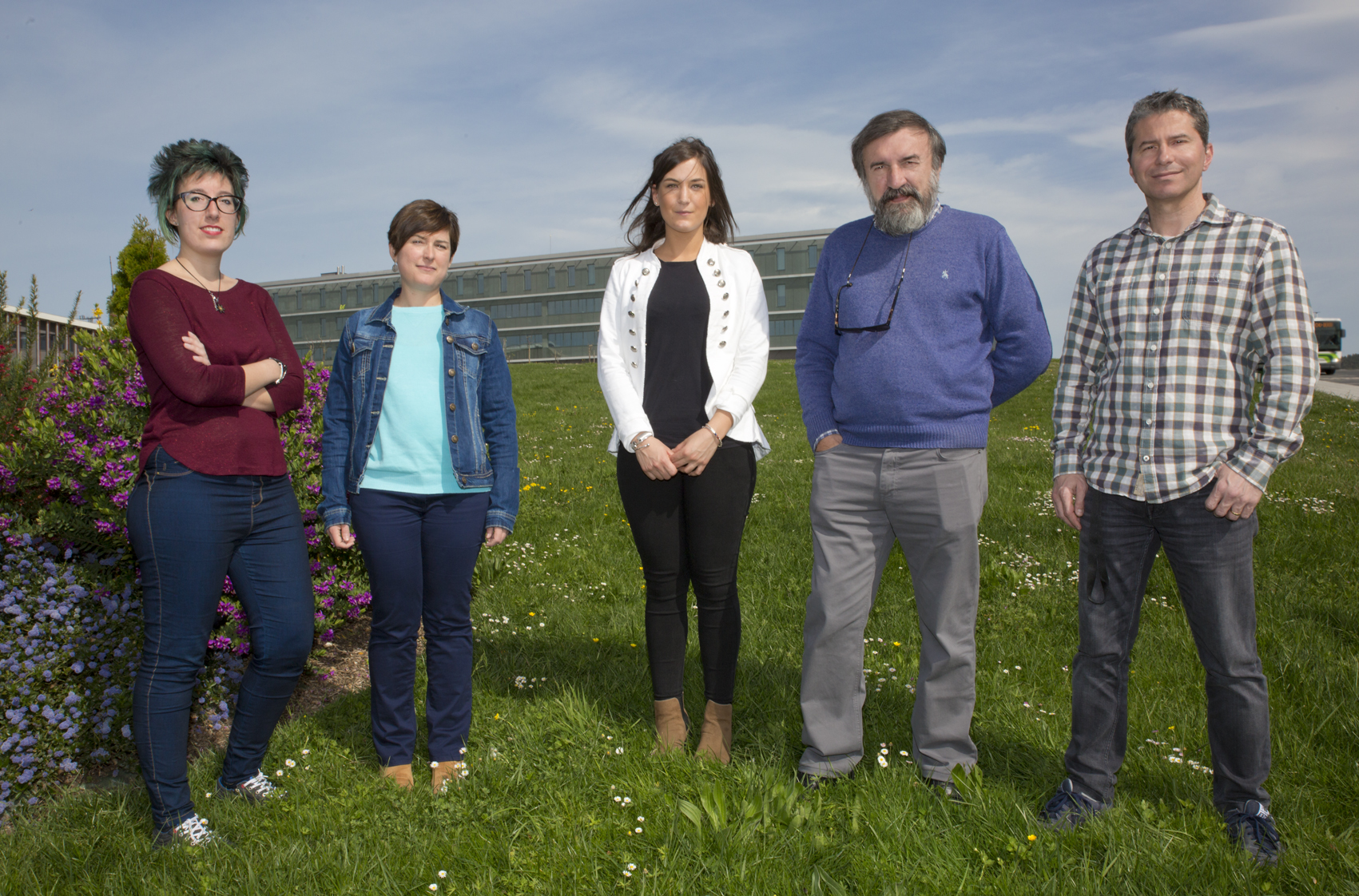Asier Romero-Andonegi, Aintzane Etxebarria-Lejarreta, Ainara Romero-Andonegi and Irati de Pablo-Delgado, lecturers and researchers at the UPV/EHU's Faculty of Education - Bilbao, have studied how 9 to 13-month-old babies tackle the shift from early babbling to the use of combinations of gestures and speech. The work The interrelation of gestures and vocalization in early communication functions: Evidence from Basque language has been published in the important linguistics journal Signos.
How do babies coordinate gestures and vocalization?
A research group at the UPV/EHU's Faculty of Education - Bilbao has studied how babies start speaking
- Research
First publication date: 20/04/2017

Science shows that human language and communication cannot be studied solely by analysing speech. Among the contributions made by this work, Asier Romero, the researcher in the Department of Language and Literature Didactics of the Faculty of Education - Bilbao, highlights the fact that this is "the first study" conducted on children whose mother tongue is Basque and which shows "how and when" babies develop and use "a pattern to coordinate gestures with speech".
"We have discovered that when a baby abandons the characteristic babbling for vocalizations of repeated, long chains of syllables at 9 months and starts the more complex pre-language phase around 11 months, his/her gestures begin to be produced mainly in combination with vocal production rather than as an act of gestures alone. In other words, the gestural and speech system are already closely related", explained Romero.
The researcher was also keen to stress that the typology of the gestures in these gesture and vocalization combinations are "mainly deictic"; in other words, they display "a declarative intention and involve implementation gestures, such as pointing, giving, showing, offering and making requests in order to direct the attention of an adult towards the object that the baby is interested in obtaining, in other words, to inform the adult about his/her interest in the object".
As far as Romero is concerned, this study shows that speech and gestures are two "essential elements" when studying human communication because there is more and more evidence that both are closely coordinated, and "it is perhaps a fundamental condition for the subsequent development of early vocabulary during the language phase".
With the potential to help to predict language alterations
In fact, as the researcher pointed out, "there is more and more scientific evidence" that shows that the combination of babbling and gestures of babies "are related" to the subsequent development of language and therefore constitute an element for prediction purposes. "That is why research of this type could help to predict language alterations in specific language disorder," said the researcher.
The aim of this pioneering work was to explore the process of language acquisition and development in relation to the time-related coordination of gestures and speech in children. To do this, the researchers recorded on video two babies born into Basque-speaking families from the moment they turned 9 months and until they reached the age 13 months.
"The recordings were made in their homes in the company of their parents. A total of over 1,260 speech acts were obtained; they were produced by each baby across about 6 hours' worth of recordings which were later analysed by applying specific ELAN software. "This tool allows one to make and process annotations in digital lines of information in a joint way for a range of audio and video files," he explained.
This pioneering publication by researchers in the EUDIA Research Group of the Faculty of Education - Bilbao has opened up fresh lines of work, and in other cases confirms what has already emerged in different pieces of research on Catalan and English babies. On this point it is interesting to draw attention to the continuity that the research will have with the PhD thesis being developed and funded by a pre-doctoral research grant from the UPV/EHU. The author is Irati de Pablo and it is entitled ‘Keinuen eta bokalizazioaren arteko harremanak bizitzaren lehen urtean: ebidentziak euskara hizkuntzatik' (Interrelations between gestures and vocalizations during the first year of life: evidence from the Basque language) and with another set of studies currently being conducted by this research group and which "are open and at the analysis and interpretation stage".
Bibliographic reference
- ‘The interrelation of gestures and vocalization in early communication functions: Evidence from Basque language'
- Signos. Estudios de Lingüística, 50(93), 96-123 (2017)
- DOI: 10.4067/S0718-09342017000100005







